First of all i must say that m really disappointed with all of the members 9 members signed up n only 6 sended me entries rest 3 dnt even bother to inform thr problem... from next time i would do nothing on ur req
Read n vote for best Info+Pic+Title
Poll Choice 1 :
The Golden History of India

India
is a country in South Asia whose name comes from the Indus River. The
name 'Bharata' is used as a designation for the country in their
constitution referencing the Ancient mythological emperor, Bharata,
whose story is told, in part, in the Indian epic Mahabharata.
The Bronze age

Indian
civilization and culture is not only ancient but it is also extensive
and varied. Many races and people have contributed and enriched it.
Vedic
civilization is the earliest civilization in Indian history. It is
named after the Vedas, the early literature of the Hindu people. This
civilization is the foundation of Hinduism and the associated Indian
culture that is known today.
The end of the Vedic Age (1500
BC-600 BC) was followed by the rise of small kingdoms and republics in
the northern parts of India and especially in the Gangetic plains of
Bihar.
The Mauryan Empire was the first major empire in the
history of India and ruled the land from 322 BC to 185 BC. Important
rulers of this dynasty were Chandragupta Maurya, Bindusara, and King
Ashoka. Bindusara was succeeded by his son Ashoka, the most famous of
the Mauryan Kings who reign from- 273 - 232 B.C
Ashoka died around 232 B.C. and the empire began to disintegrate under weak successors. The Golden Age

>
Satavahanas is one of the most celebrated dynasties of ancient India.
Satavahanas ruled over large area of modern western and southern India.
>
Gupta dynasty was ruled from around 320 to 600 CE and covered most of
Northern India. It was one of the largest political and military empires
in the world.
The Classical Age

>
Harsha or Harshavardhana was an Indian emperor who ruled Northern India
for over forty years. He was the son of Prabhakar Vardhan and younger
brother of Rajyavardhan, a king of Thanesar. He ruled from 590-647 AD.
>
The Chalukyas built their kingdom on the ruins of the Vakatakas, who in
turn had built theirs on the remains of the Satavahanas. They
established their capital at Vatapi (modern Badami). The Chalukyas were
sworn enemies of the Pallavas and rose to power in Karnataka
>
The Cholas are the earliest and the most ancient among the South Indian
royal houses. The artifacts of the period found in South India mention
Mahabharata as well as Ashokan edicts.
> The Rajput who held
the stage of feudal rulers before the coming of the Muslims, were a
brave and chivalrous race. The name rajputs was originally taken from
Raj-Putra i.e. prince or literally "king's son"
>The Mughal
emperors were from Afghanistan, northwest of India. Their family came
from somewhere else, and they spoke Turkish and Persian, not Indian
languages. Even so, they stayed in India and built their power there.
>
During the last quarter of the twelfth century, Muhammad of Ghor
invaded the Indo-Gangetic plain, conquering in succession Ghazni,
Multan, Sindh, Lahore, and Delhi. Qutb-ud-din Aybak, one of his generals
proclaimed himself Sultan of Delhi.
> The first Battle of
Panipat gave a deathblow to the Lodhi Empire and marked the end of the
Delhi Sultanate's rule in India. It led to the establishment of the
Mughal Empire in India. Babar defeated Lodi at Panipat, not far from
Delhi, and so came to establish the Mughal Empire in India.
Poll Choice 2 :
Ashoka The Great
Emperor Ashoka The Great
ASHOKA
or better known as the Emperor Ashoka The Great was a Mauryan King. He
was the son of the Emperor Bindusara and one of his queens named Dharma.
It is believed that Buddha prophesized about the birth of Ashoka, in
the story of the 'Gift of Dust'. He said that a king would be born in
Pataliputra who will reign one of the four continents and adorn
Jambudweep with my relics and spread Buddhism in the whole world. And
Ashoka did exactly same as prophesized by the Buddha.
The name
Ashoka means 'without sorrow', he has been referred with many other
names such as 'Devanampriya' meaning 'the beloved of the Gods' ,and
'Priyadarshi', one who regards everyone amiably.
Ashoka is known
in the history of the India as well as world mainly for two things,
first one for the battle of Kalinga and the second one for the spread of
Buddhism in India and across the world. He ruled India from 273 BC to
232 BC. He made many conquests during his rule and reigned over most
parts of India, parts of South Asia and Persia.
During his
initial days Ashoka was very cruel, and is believed to have killed his
half brothers in order to get the throne. As a result he began to be
called as a Chand Ashoka, meaning brutal Ashoka. He did not miss any
opportunity to invade the neighboring kingdoms, but the war of kalinga
and its subsequent conquest is believed to be the last conquest of King
Ashoka. It is believed that in this war around 100,000 people from each
side were killed and many more became homeless. After watching such a
scene of devastation Ashoka screamed 'What have I done?' and he changed
his policy. From then onwards he laid more emphasis on the welfare of
his state and adopted Buddhism
He preached Buddhism all over
India and abroad. For this he made many Stupas at the places associated
with the life of Buddha. Due to all this he earned the epitaph of
Dharmaashoka, meaning the Pious Ashoka. He sent his son Mahendra and
daughter Sanghmitra to Ceylon to spread Buddhism there. Ashoka built
thousands of Stupas and Viharas for the followers of Buddhism. The
pillar of Ashoka at Sarnath is the most famous of all the Stupas, and is
the national emblem of India. He ruled for almost thirty-eight years
and died in 232 BC. He is remembered in India even today for the service
he did to the Buddhism.
Coins
The Great Stupa at Sanchi
Ashokan Pillar
Site of Kalinga battlefield
Ashoka Chakra
Mauryan Dynasty
Poll Choice 3 :
Ancient History Of Vijayanagara Empire
The
Vijayanagara Empire referred to as the Kingdom of Bisnagar by the
Portuguese, was an empire based in South India, in the Deccan Plateau
region. It was established in 1336 by Harihara I and his brother Bukka
Raya I of Sangama Dynasty.
The empire
rose to prominence as a culmination of attempts by the southern powers
to ward off Islamic invasions by the end of the 13th century. It lasted
until 1646 although its power declined after a major military defeat in
1565 by the Deccan sultanates. The empire is named after its capital
city of Vijayanagara, whose ruins surround present day Hampi, now a
World Heritage Site in Karnataka, India.
Secular
royal structures show the influence of the Northern Deccan Sultanate
architecture. Efficient administration and vigorous overseas trade
brought new technologies such as water management systems for
irrigation. The empire's patronage enabled fine arts and literature to
reach new heights in the languages of Kannada, Telugu, Tamil and
Sanskrit, while Carnatic music evolved into its current form. The
Vijayanagara Empire created an epoch in South Indian history that
transcended regionalism by promoting Hinduism as a unifying factor.
Pic 1: The Extension of the empire, its fort and also the royal Insignia.
Pic 2: The dressing of those days, the inscirptions, the market place.
Pic 3: The Religion, the deities worshipped, damaged statue during Islamic invasion
Pic 4: The Architecutre of the Vijayanagara Empire
Poll Choice 4 :
Ancient Indian History
INDIA- The
country of diversities and vividness. India which is the 7th largest
country in the world has the most bright and developed history in the
ancient times. The following are the various stages of Ancient Indian
History and Culture discussed briefly:
1) Stone age: The isolated remains of Homo erectus in Hathnora in the
Narmada Valley Civilisation indicates that Central India was inhabited
since the late Stone age between 5,00,000 to 2,00,000 years ago.
The
first semi-permanent settlement was found in Central India near
Bhimbetka rock shelters nearly 9000 years ago, where they painted rock
paintings as given below-
 Bhimbetka Rock Painting(carving) in Madhya Pradesh around 30,000 years ago.
Bhimbetka Rock Painting(carving) in Madhya Pradesh around 30,000 years ago.
2) Bronze Age: The
bronze age in India began around 3300 BC ago. Mainly during this time
period two major civilisations came in rule. First, The Indus valley
civilisation which was the best developed urban civilisation of that
period. It was centered around Indus-ganga river valley. The inhabitants
here were Harappans who developed new techniques in handicrafts and
metallurgy. They used tools made up of bronze, copper, lead and tin. The
second developed civilisation
was a group of civilisation which were centered in Dholavira, Kalibangan, Lothal, Harappa, Mohenjo-daro etc.
Above is the Indus valley civilisation. This is how developed the architecture of the Harappans was.
3) Vedic Period: The
vedic period is characterised by Indo-Aryan culture associated with the
texts of the Vedas which where written in Vedic sanskrit.
The
vedic period lasted from about 1500 BC to 500 BC which layed the
foundation of Hinduism and other cultural aspects of the early Indian
society.
The concepts of Indian
philosophy like Dharma and karma came from the texts of Vedas. There
were fours Vedas- the Rigveda, the Yajurveda, the Samaveda (Somveda),
the Atharvaveda. These were composed by great Aryan Priests and Gurus of
their time.
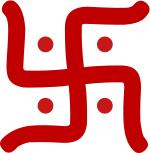 The Swastika is the major element of the Hindu iconography from the vedic period.
The Swastika is the major element of the Hindu iconography from the vedic period.
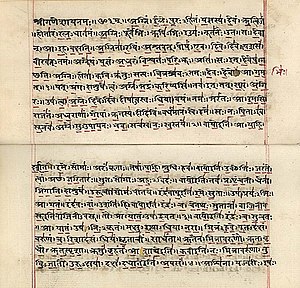 The Rigveda manuscript in Devanagari language.
The Rigveda manuscript in Devanagari language.
4) The period of the mahajanpadas: In
the vedic period there emerged a number of small and big kingdoms. The
small kingdoms were termed as Janapadas and the big kingdoms were termed
mahajanapadas literally "maha" means great and "janapadas" means
Foothold of a tribe i.e. Mahajanadas are great realms according to the
ancient buddhist and jainism texts. It refers to ancient indian kingdoms
that existed between sixth and third century BC. There were sixteen
mahajanapadas e.g. Vrijji, Anga, Magadha, Kashi, Malla, Kosala,
Panchala, Kuru, Gandhara, Shurasena, Matsya, Vatsa, Avanti, Chetiya,
Assaka and Kamboja.
Following is the map of India indicating the position of the 16 mahajanapadas in India, 600 BC:
5) Persian and Greek conquests: The
Persian and Greek invasions had important repercussions on Indian
civilization. The political systems of the Persians were to influence
future forms of governance on the subcontinent, including the
administration of the Mauryan dynasty. In addition, the region of
Gandhara, or present-day eastern Afghanistan and northwest Pakistan,
became a melting pot of Indian, Persian, Central Asian, and Greek
cultures and gave rise to a hybrid culture, Greco-Buddhism, which lasted until the 5th century CE and influenced the artistic development of Mahayana Buddhism.
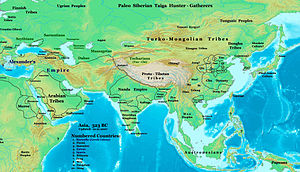 Asia in 323 BC, the Nanda Empire and Gangaridai Empire in relation to Alexander's empire and neighbours.
Asia in 323 BC, the Nanda Empire and Gangaridai Empire in relation to Alexander's empire and neighbours.
6) Mauryan Empire: The Mauryan empire (322–185
BCE), ruled by the Mauryan dynasty, was a geographically extensive and
powerful political and military empire in ancient India. The empire was
established by Chandragupta Maurya in Magadha presently Bihar. The
empire flourished under the reign of Ashoka the Great.At
its greatest extent, it stretched to the north to the natural
boundaries of the Himalayas and to the east into what is now
Assam. To the west, it reached beyond modern Pakistan, annexing
Balochistan and much of what is now Afghanistan, including the modern Herat and Kandahar provinces.
The empire was expanded into India's central and southern regions by
the emperors Chandragupta and Bindusara, but it excluded extensive
unexplored tribal and forested regions near Kalinga which were
subsequently taken by Ashoka. Like every state, the Maurya Empire
needed to have a unified administrative apparatus. Ashoka ruled
the Maurya Empire for 37 years from 268 BC until he died in 232
BC. During that time, Ashoka pursued an active foreign policy aimed at
setting up a unified state.
During the
Mauryan Empire slavery developed rapidly and significant amount of
written records on slavery are found. The Mauryan Empire was based on a
modern and efficient economy and society. However, the sale of
merchandise was closely regulated by the government. Although
there was no banking in the Mauryan society, usury was customary with
loans made at the recognized interest rate of 15% per annum.
Ashoka's
reign propagated Buddhism. In this regard Ashoka established many
Buddhist monuments. Indeed, Ashoka put a strain on the economy and the
government by his strong support of Buddhism. Chandragupta's minister
Chanakya wrote the Arthrashastra, one of the greatest treatises
on economics, politics, foreign affairs, administration, military arts,
war, and religion produced in Asia. The Arthashastra and the Edicts of Ashoka are
primary written records of the Mauryan times. The Lion Capital of
Ashoka at Sarnath, has became the national emblem of India.
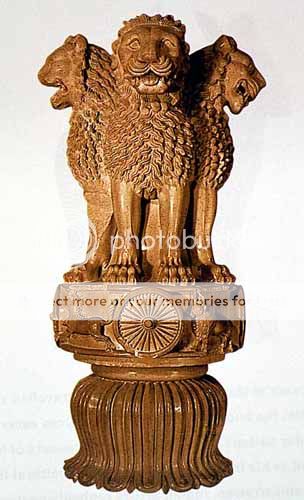 The lion capital of Ashoka which is presently the nation emblem of Sovereign state-India.
The lion capital of Ashoka which is presently the nation emblem of Sovereign state-India.
Pictures Depicting Ancient India:
ANCIENT INDIAN TOOLS AND WEAPONS:
These
tools( given above) are examples of tools made from animal bones. These
are remains from the Neolithic period from the Stone Age.
The Neolithic people had learned how to manufacture pottery and weapons, though not of a very superior quality.
From
seventh through tenth centuries, Chalukyas and Rashtrakutas of
Karnataka, Pallavas of Kanchi, Cholas of Tanjore, and Pandyas of Madurai
built great temples dedicated to Hindu gods. Chalukyas even established
a school for temple-building arts at Aihole and Pattadakal in
Karnataka. Some of the finest examples of temple building
experiments are given above.
The Great Chariot Wheel At the Konark Temple(sun temple) in Orissa.
Temple at Thanjavaur.
Stupas of Sanchi
Indian Coins during the Indus Valley Civilisation.
Indian coins from the time of Samudragupta of Gupta dynasty.
The game of snake and ladder which originated from India.
Pillar of Ashoka in Sanchi
Pillar of Ashoka with bull inspired from Buddhist texts.
India
is a country with its royal and vivid history. India has world great
Civilisations, Kings, Emperors with their great kingdoms and empires.
Indian history is the best and will remain the best forever.
Poll Choice 5 :
Kosal
\|/ The Kingdom Of The Lord \|/
Kosal. The Kingdom Of Lord Vishnu, Who Appeared In Treta Yug As Shri Raam. Kosal Was An Ancient Indian Kingdom As Well As One Of The Solah Mahajanapad (16
Powerful Realms) In The 16th Century BCE. It's Cultural And Political
Strength Earned It The Status Of Great Power. But Later It Was Weakened
By A Series Of Wars With The Neighboring Kingdom Of Magadh And In The
4th Century BCE, It Was Finally Absorbed In It. This Region Had 3 Main
Cities, Ayodhya, Saket And Shravasti.
It Also Had A Number Of Minor Towns Like Setavya, Ukattha, Dandakappa,
Nalakapana And Pankadha. According To The Puranas, Ayodhya Was The
Capital Of Kosal During The Reign Of Ikshvaku And His Successors.
Shravasti Was The Capital Of Kosal Between 6th Century BCE And 6th
Century CE. Kosal Is Not Mentioned In Early Vedic Literature. It Is
Mentioned As A Region In The Satapatha Brahman And The Kalpasutras.

^^This Picture Shows The Ruins Of The City Walls Of Shravasti, The Capital Of Kosal Kingdom.
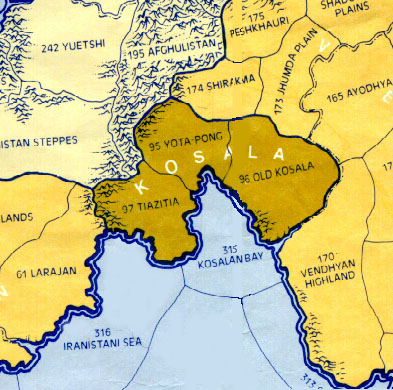
^^This Is The Map Showing The Territory Of The Kosal Kingdom.
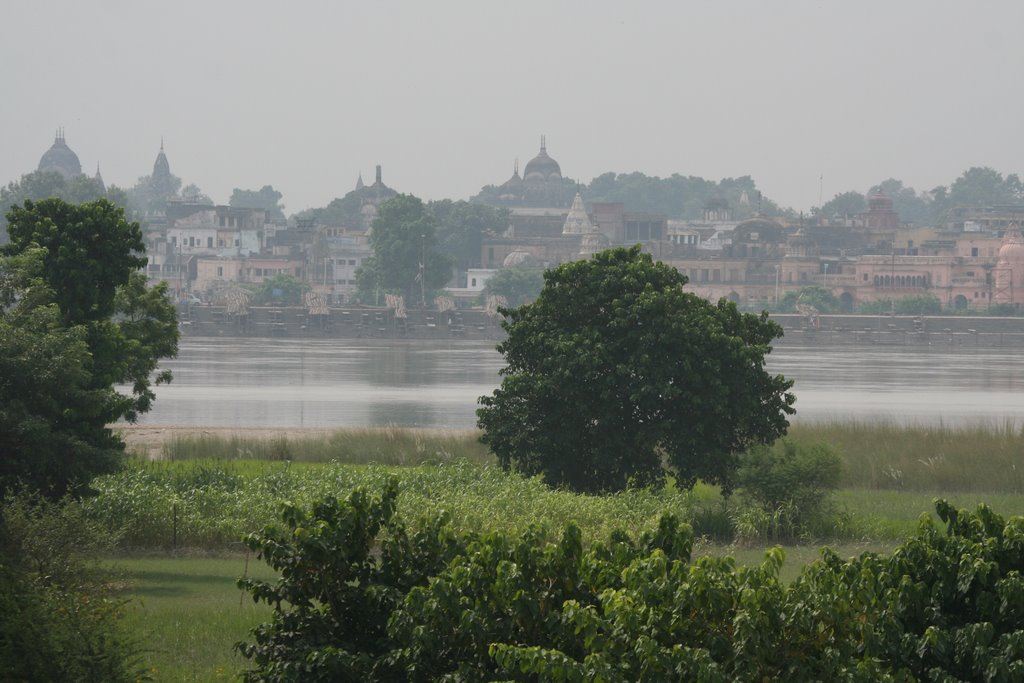
^^A Distant View Of The City Of Ayodhya, The Birth Place Of Lord Raam.
^^The Aanand Bodhi Tree At Shravasti.
Poll Choice 6 :
.OUR MOTHERLAND...ENDLESS BEAUTY BEHIND THE THRONE
THE SUN TEMPLE OF MODHERA
Sun
Temple at Modhera is one of the few shrines that are dedicated to the
Sun God. Situated on the banks of Pushpavati River in Modhera, Sun
Temple is easily accessible from Ahmedabad, the largest city of Gujarat.Sun
Temple at Modhera is one of the few shrines that are dedicated to the
Sun God. Situated on the banks of Pushpavati River in Modhera, Sun
Temple is easily accessible from Ahmedabad, the largest city of Gujarat. Sun
Temple at Modhera is one of the few shrines that are dedicated to the
Sun God. Situated on the banks of Pushpavati River in Modhera, Sun
Temple is easily accessible from Ahmedabad, the largest city of Gujarat.
MAHABAT MAQBARA
Mahabat
Maqbara, a fine mausoleum of the Nawab of Junagadh is an exquisite
structure with silver doors and intricate carvings, including minarets
encircled by spiraling stairways. The construction of this mausoleum was
started in 1878 by Mahabat Khanji and completed in the year 1892 by his
successor, Bahadur Khanji.
The Mahabat Maqbara of Junagadh houses the tombs of Mahabat Khan and Baha-ud-din, the minister of Nawab Rasul Khanji.
Khushi
Njoy & Be Fair
😃
Voting Ends On 1st Jan '13
























 Bhimbetka Rock Painting(carving) in Madhya Pradesh around 30,000 years ago.
Bhimbetka Rock Painting(carving) in Madhya Pradesh around 30,000 years ago.
 The Swastika is the major element of the Hindu iconography from the vedic period.
The Swastika is the major element of the Hindu iconography from the vedic period. The Rigveda manuscript in Devanagari language.
The Rigveda manuscript in Devanagari language.
 Asia in 323 BC, the Nanda Empire and Gangaridai Empire in relation to Alexander's empire and neighbours.
Asia in 323 BC, the Nanda Empire and Gangaridai Empire in relation to Alexander's empire and neighbours.  The lion capital of Ashoka which is presently the nation emblem of Sovereign state-India.
The lion capital of Ashoka which is presently the nation emblem of Sovereign state-India.
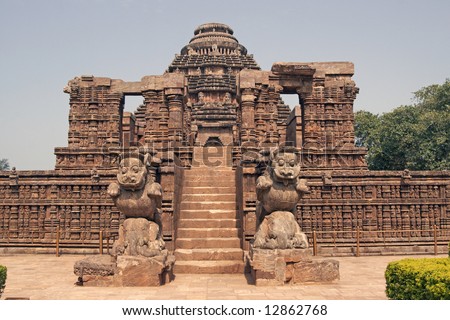
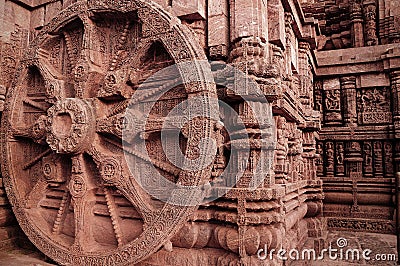






comment:
p_commentcount